O P L
OXFORD PSYCHIATRY LIBRARY

Sleep Disorders
Oxford University Press makes no representation, express or implied, that the drug dosages in this book are correct. Readers must therefore always check the product information and clinical procedures with the most up-to-date published product information and data sheets provided by the manufacturers and the most recent codes of conduct and safety regulations. The authors and the publishers do not accept responsibility or legal liability for any errors in the text or for the misuse or misapplication of material in this work.
 Except where otherwise stated, drug doses and recommendations are for the non-pregnant adult who is not breast-feeding.
Except where otherwise stated, drug doses and recommendations are for the non-pregnant adult who is not breast-feeding.
O P L
OXFORD PSYCHIATRY LIBRARY

Sleep Disorders
Second Edition
Dr Sue Wilson
Senior Research Fellow, Centre for Neuropsychopharmacology,
Division of Brain Sciences, Department of Medicine,
Imperial College London, London, UK
Prof. David J. Nutt
Professor of Neuropsychopharmacology,
Centre for Neuropsychopharmacology,
Division of Brain Sciences,
Department of Medicine, Imperial College London, London, UK


Great Clarendon Street, Oxford, OX2 6DP,
United Kingdom
Oxford University Press is a department of the University of Oxford.
It furthers the Universitys objective of excellence in research, scholarship,
and education by publishing worldwide. Oxford is a registered trade mark of
Oxford University Press in the UK and in certain other countries
Oxford University Press 2013
The moral rights of the authors have been asserted
First Edition published in 2008
Second Edition published in 2013
Impression: 1
All rights reserved. No part of this publication may be reproduced, stored in a retrieval system, or transmitted, in any form or by any means, without the prior permission in writing of Oxford University Press, or as expressly permitted by law, by licence or under terms agreed with the appropriate reprographics rights organization. Enquiries concerning reproduction outside the scope of the above should be sent to the Rights Department, Oxford University Press, at the address above
You must not circulate this work in any other form
and you must impose this same condition on any acquirer
Published in the United States of America by Oxford University Press
198 Madison Avenue, New York, NY 10016, United States of America
British Library Cataloguing in Publication Data
Data available
Library of Congress Control Number: 201 3937233
ISBN 9780199674558
Printed in the UK
by Bell & Bain Ltd, Glasgow
Oxford University Press makes no representation, express or implied, that the drug dosages in this book are correct. Readers must therefore always check the product information and clinical procedures with the most up-to-date published product information and data sheets provided by the manufacturers and the most recent codes of conduct and safety regulations. The authors and the publishers do not accept responsibility or legal liability for any errors in the text or for the misuse or misapplication of material in this work. Except where otherwise stated, drug dosages and recommendations are for the non-pregnant adult who is not breastfeeding.
Links to third party websites are provided by Oxford in good faith and for information only. Oxford disclaims any responsibility for the materials contained in any third party website referenced in this work.
Contents
Sleep disorders are the orphans of medical practice, despite the fact that up to 40% of all primary care attendees have sleep symptoms, and in psychiatry practice this percentage rises; in depression almost everyone has a degree of sleep disturbance. In other psychiatric disorders the levels are lower but often highly importantfor example, circadian disruption in schizophrenia and dementia severely impacts on rehabilitation possibilities, and insomnia in bipolar disorder is an early warning of manic relapse. Sleep is also important in other medical conditions, most notably sleep breathing disorders with their attendant daytime risks of sleepiness-induced accidents. Finally, there are some disorders of sleep itself, such as narcolepsy and night terrors, which though rare do have major impacts on the lives of patients and their relatives, as well as revealing insights into the brain mechanisms underlying sleep processes.
Despite this wide impact of disordered sleep in medical practice and the major impairments it causes to quality of life, most doctors and other health professionals have only minimal training in sleep processes or their pathology. This short book sets out to redress this imbalance by giving a concise yet complete overview of the field. We cover the basics of sleep physiology and then describe the wide range of different disorders that can be seen in both primary and secondary care. The ways to diagnose these are described, and treatment approaches are summarized. There is a special chapter dedicated to the problems of sleep disruption that we as professionals inevitably experience and often suffer from.
We believe that this book will fulfill a useful role in the education of doctors, nurses and other healthcare professionals. In addition, we hope that it will communicate some of our enthusiasm for this area of medicine in which we have worked for over 25 years.
David Nutt, March 2008
Normal sleep
Key points
 Sleep is essential to normal brain function
Sleep is essential to normal brain function
 Loss of sleep can result in changes in mood, cognitive impairment, and abnormal hormone rhythms
Loss of sleep can result in changes in mood, cognitive impairment, and abnormal hormone rhythms
 Most adults sleep for between 7 and 8 h a night; adults who sleep for less than 6 h are likely to report that they do not get enough sleep and that they are more dissatisfied with life
Most adults sleep for between 7 and 8 h a night; adults who sleep for less than 6 h are likely to report that they do not get enough sleep and that they are more dissatisfied with life
 The sleepwake cycle is controlled by two separate but interacting processes: the circadian process and the homeostatic or recovery process
The sleepwake cycle is controlled by two separate but interacting processes: the circadian process and the homeostatic or recovery process
 The typical sleep pattern consists of 4 or 5 cycles of quiet sleep, alternating with paradoxical or rapid-eye-movement (REM) sleep
The typical sleep pattern consists of 4 or 5 cycles of quiet sleep, alternating with paradoxical or rapid-eye-movement (REM) sleep
 Quiet sleep is often referred to as non-REM (NREM) sleep, and is divided further into four stages
Quiet sleep is often referred to as non-REM (NREM) sleep, and is divided further into four stages
1.1 Why do we sleep?
Humans spend about a third of their lives asleep, but we know surprisingly little about the precise function of sleep. What we do know is that:

Next page


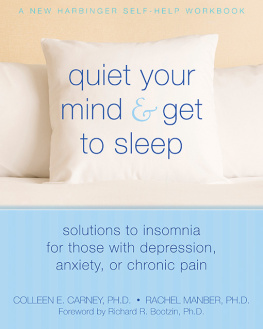
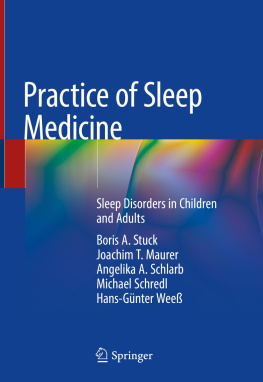
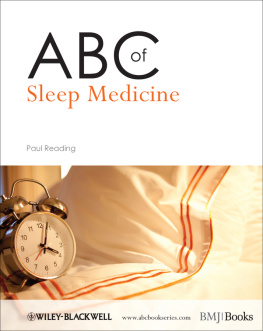
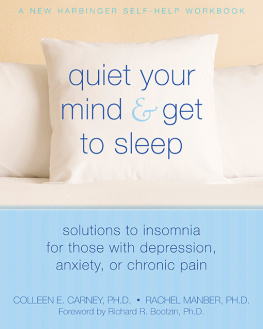


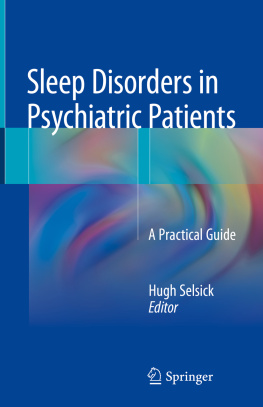
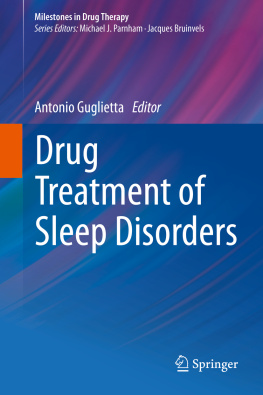
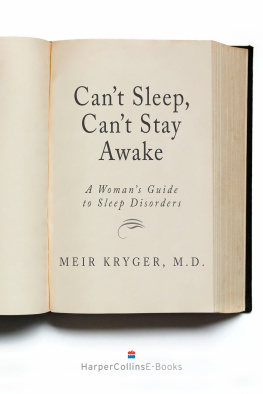

 Except where otherwise stated, drug doses and recommendations are for the non-pregnant adult who is not breast-feeding.
Except where otherwise stated, drug doses and recommendations are for the non-pregnant adult who is not breast-feeding.

 Sleep is essential to normal brain function
Sleep is essential to normal brain function